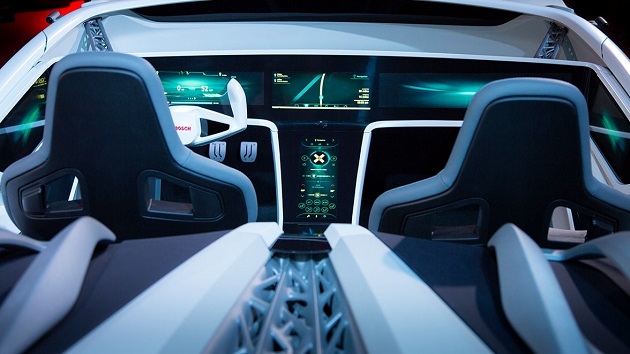Growing of Internet of Things (IoT) coupled with significant demand for vehicle automation will remain instrumental in driving the growth of automotive human machine interface systems market. Sales of automotive human machine interface systems is also impacted by a number of macroeconomic and industry-specific factors including growing technological advancements with a refocus on sustainability and the ‘green movement’ albeit various regulatory directives for manufacturers of automotive human machine interface systems market. However, the paradigm shift towards green technology will only impact the market moderately considering high development time for subsidiaries like charging points and efficient, affordable batteries.
Speaking about the global automotive landscape, Study predicts that China will continue to remain a go-to destinations for various research and development activities, including pilot runs of products. Although fragmented, China is likely to move towards market consolidation, giving an opportunity to local manufacturers and suppliers to emerge in market-leading positions. Key companies are projected to set up R&D facilities in China.
Study foresees that the demand for automotive human machine interface systems is projected to expand at a promising pace representing a sizeable CAGR in terms of value during the assessment period of 2017 to 2022.
Soaring demand for in-car infotainment systems will translate into increased sales of automotive human machine interface systems by 2022. Used for navigation, communication, and entertainment, infotainment systems use human machine interface systems, connected through devices and software, to enable seamless human interaction with automated systems in vehicles. Largely adopted in ultrahigh-end luxury segment cars, human machine interface-powered infotainment systems provide a holistic in-car experience. However, study envisages that automakers will soon begin to target high-end and mid-segment cars and deploy human machine interface systems, especially in APEJ and North America.
Increasing penetration of connected mobile phones uses in vehicles for navigation and communication is likely to influence market growth over the forecast period. Advancements like supervisory control and data acquisition (SCADA) and alarming, receiving and sending information, and integration with enterprise-resource handling systems will further drive the global automotive human machine interface system market. Manufacturers working on efficient and sophisticated mix of design and layout coupled with tactile and ergonomic response system for optimal user experience will drive human machine interface implementation, predicts study.
Meeting regulatory and standards consideration pertaining to design and manufacturing will gain prominence in the coming years. Standards governing the components placements, legend size, color, emergency buttons configuration and other factors like usability and efficiency will define the product application, making it imperative for manufacturers to meet industry benchmarks. Tighter emphasis on regulations will further define the growth trajectory of the global market for human machine interface systems in the foreseeable future. Americans with Disability Act (ADA) regulations that calls for overall accessible features for passengers with disabilities, could bring innovation opportunities for manufactures and component designers.
A thorough distribution-channel analysis of the global automotive human machine interface system market, indicates that sales through aftermarket channel will remain the significantly high, owing to pricing issues. For OEMs, it is an opportunity for long-term strategic partnerships resulting in business expansion.
Click here for more information








